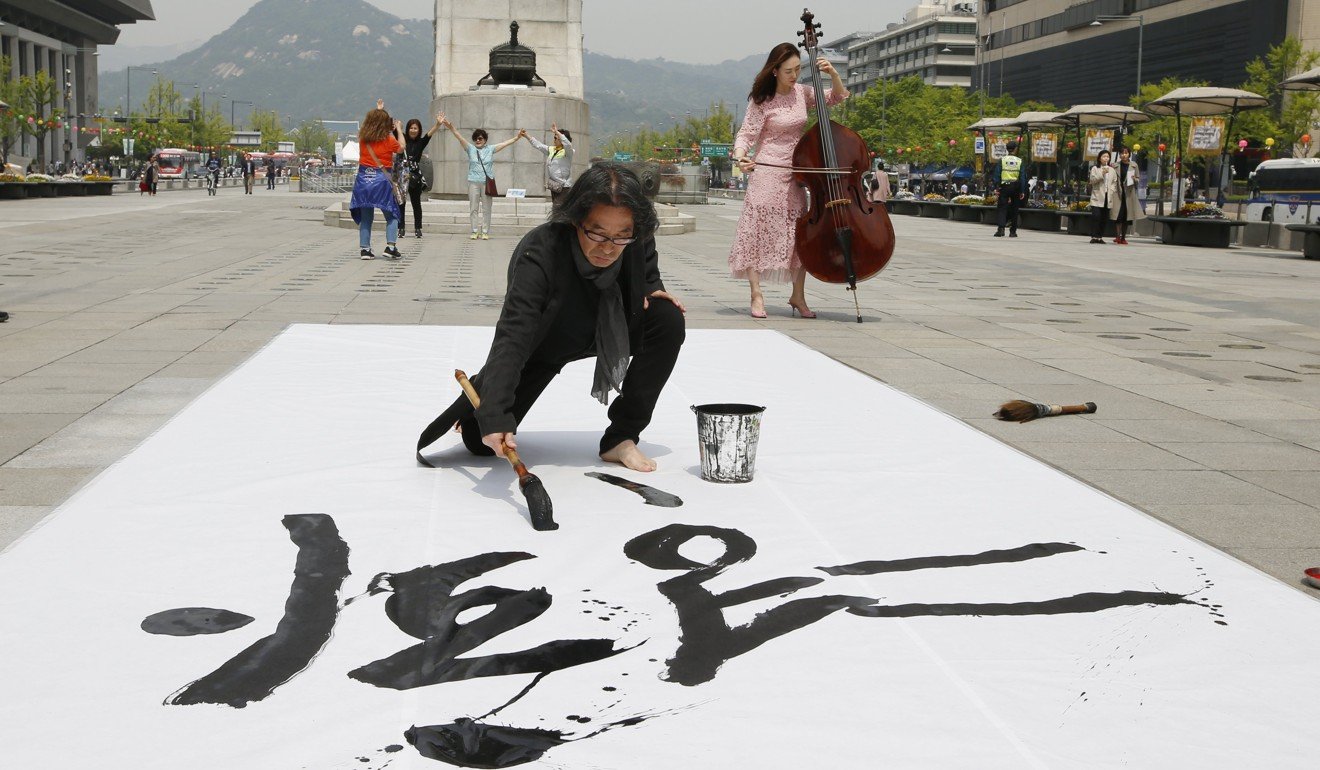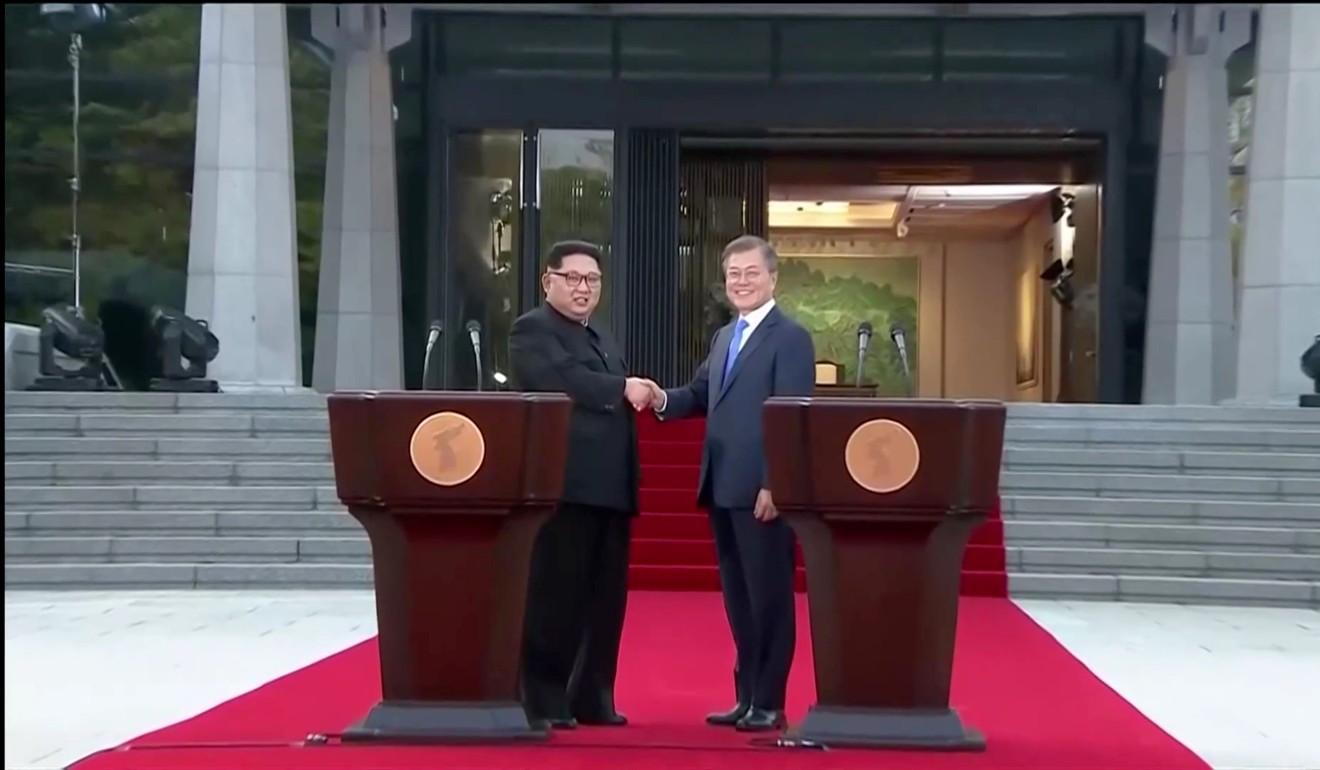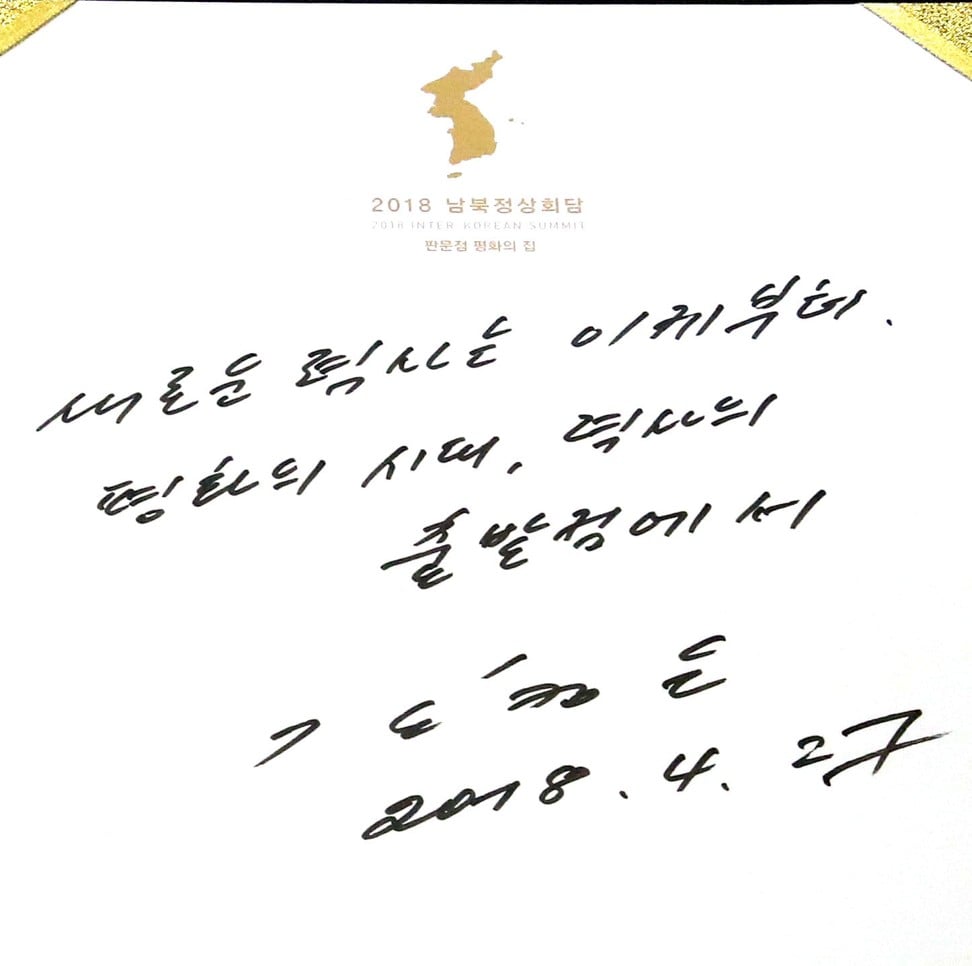
Korea summit: euphoria now, but Kim Jong-un’s real test is to come – Donald Trump
Moon Jae-in and Kim Jong-un smiled, embraced and pledged an end to conflict in Korea. But the success of their summit may not truly become clear until Kim sits down with the American leader
Countless white flowers were planted on the main lawn in front of City Hall in the shape of a unified Korean peninsula, and throughout the square were exhibits, with photos and written explanations, detailing the history of inter-Korean division, interspersed with aspirational slogans, such as “A new start towards peace.”


He felt like after years of antagonism, South and North Korea had reached a turning point. “Kim Jong-un has been tough until now, but I think he has realised that we all have to work together. As long as we work together everything will be good,” the elderly Kim said.
Hang on, what language is Kim Jong-un speaking?
A wave of consensus has formed in South Korean society that now is the time to earnestly attempt negotiations with North Korea, considering that in recent years, as South Korea and the international community have enacted multiple rounds of sanctions and cut off nearly all contact, North Korea has only advanced with its nuclear armament and become a more daunting threat.
And with an unconventional, and outspoken, president in the White House, more South Koreans began to fear that any disruption to the status quo could spark a conflict between North Korea and the United States.
While far-right civic groups held sparsely attended protests condemning Friday’s summit, South Korean society has mostly united in support of soothing ties, with even the country’s virulently anti-North Korea conservative media signing off on the summit. Moon has been rewarded at the polls for spearheading a North Korea policy that is far more conciliatory than those of his two most recent predecessors. On Friday, pollster Gallup Korea released the results of a survey this week showing that Moon’s approval rate was up three per cent this week over the previous week, and attributed this to Moon spearheading Friday’s summit.
But as the initial euphoria wears off, South Koreans will recall that summits held in 2000 and 2007 concluded with similarly ambitious pronouncements that ultimately amounted to little, and will start to parse the summit statement seeking to determine how feasible it is for the two sides to follow through on their promises.
Not everyone is optimistic things will work out. “This meeting was more positive than others before, but in the past, North Korea broke its promises,” said Kim In-hwi, 33, who works for an international trading company. “Nuclear weapons are their shield, their lifeline. I don’t think they’ll give those up in the future.” He also questioned whether the two leaders could remain so cordial moving ahead, or if his president was going to get played. “Moon wants to continue their relationship because he has always liked North Korea, but many people suspect that Kim just wants money or something.”
Abe’s nuclear disaster: why has Japan been shut out of North Korea talks?
The summit statement starts out with goals that are relatively uncomplicated, then works its way up to much more challenging prospects. The first of the statement’s three main points centres on South and North communicating regularly and organising ground-level exchanges for government officials and civilians, to build trust and narrow the cultural gap that has grown in decades of division.
This includes reunions of divided families, slated for August.
The next point is the toning down of military tensions by holding regular talks to prevent unnecessary friction.

It’s no joke: the North Korean nuclear crisis could get Trump the Nobel Prize
Also, the statement doesn’t say that North Korea will give up its nukes. “There’s nothing in the language of the statement that indicates that North Korea is any closer to what the US would consider an acceptable commitment to denuclearisation,” said Mason Richey, an associate professor of politics in the Graduate School of International and Area Studies, Hankuk University of Foreign Studies in Seoul.
WATCH: Kim and Moon plant ‘peace and prosperity’
The next step in the diplomatic process is for North Korea to hold a summit with the US this spring. Washington has insisted that North Korea completely give up its nuclear programme; North Korea has given no clear indication that it intends to do so.

